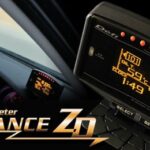Choosing the right OBD2 scanner can be overwhelming with the variety of options available, from simple code readers to professional-grade diagnostic tools. Each device offers different features, complexity, and price points. This guide will help you navigate the options and choose the best OBD2 scanner for your needs.
While price is a factor, saving a few dollars might mean missing out on critical functionalities, especially with today’s complex car electronics. Understanding your needs is key to making the right decision. We’ve compiled the most frequently asked questions from our customers to help guide you through the selection process.
Connecting to certain vehicle models can sometimes be challenging. Even though most vehicles are compatible with standard OBD2 scanners, some require more specialized equipment. We offer expert advice and support to ensure you select the perfect tool for your specific car make and model.
Common OBD2 Scanner Uses:
We’ve categorized the most common reasons people use OBD2 scanners:
- How to clear a check engine light: An OBD2 scanner can read the trouble codes triggering the check engine light and, in many cases, allow you to clear them after addressing the underlying issue.
- How to clear an airbag light: Similar to the check engine light, a scanner can diagnose the problem causing the airbag light to illuminate and potentially clear the code once resolved.
- How to clear an ABS light: ABS warning lights indicate issues with the Anti-lock Braking System. A scanner can pinpoint the problem and allow you to clear the code after the necessary repairs.
- How to clear an oil change light: Many modern vehicles have oil change reminder lights. An OBD2 scanner can often reset these reminders after performing an oil change.
Choosing the Right OBD2 Scanner for Your Needs:
OBD2 scanners provide detailed diagnostic reports, identifying trouble codes that pinpoint potential problems. While these tools can clear the codes, it’s crucial to remember that simply erasing a code doesn’t fix the underlying mechanical issue. If the problem persists, the warning light will likely reappear. The scanner helps diagnose; it doesn’t repair. Sometimes, a code can’t be cleared until the problem is fixed.
